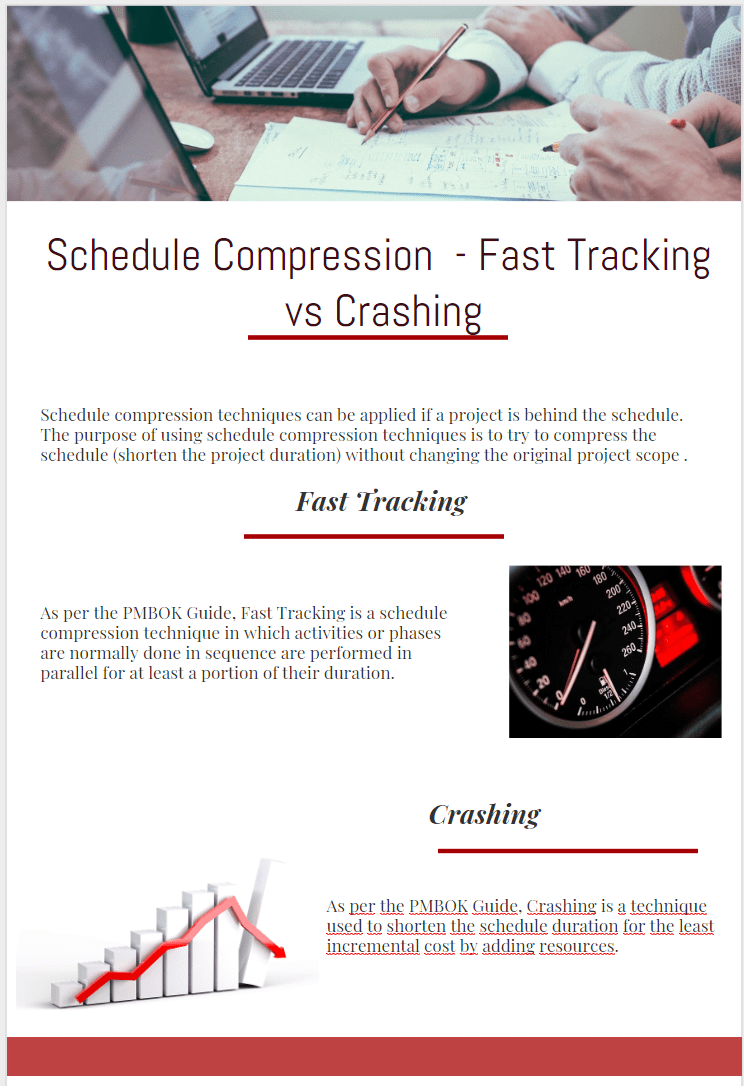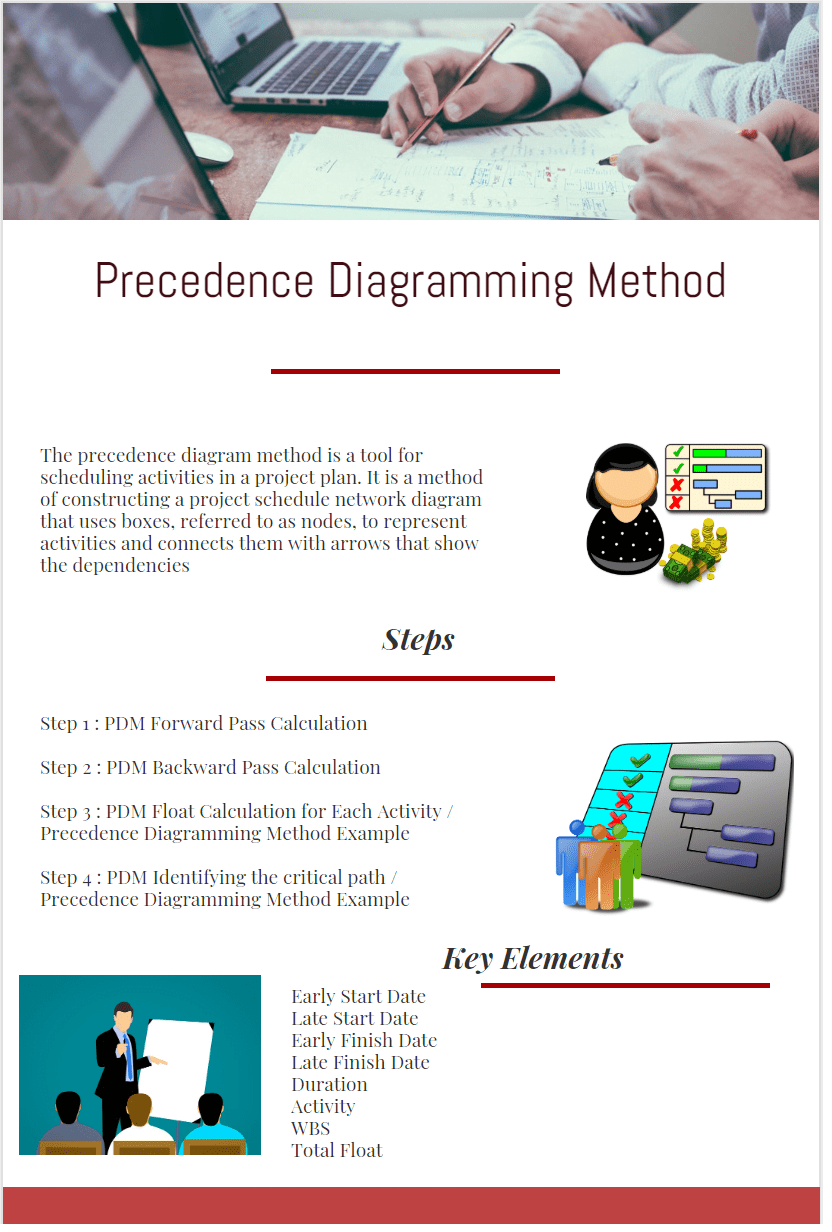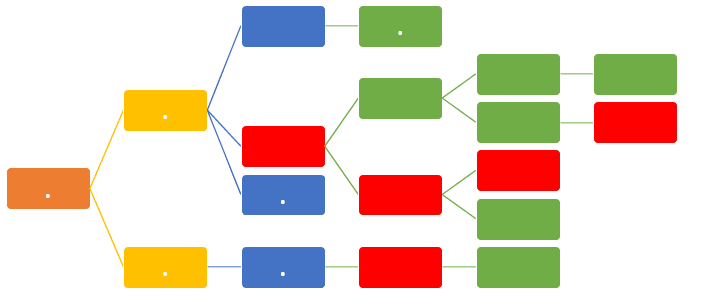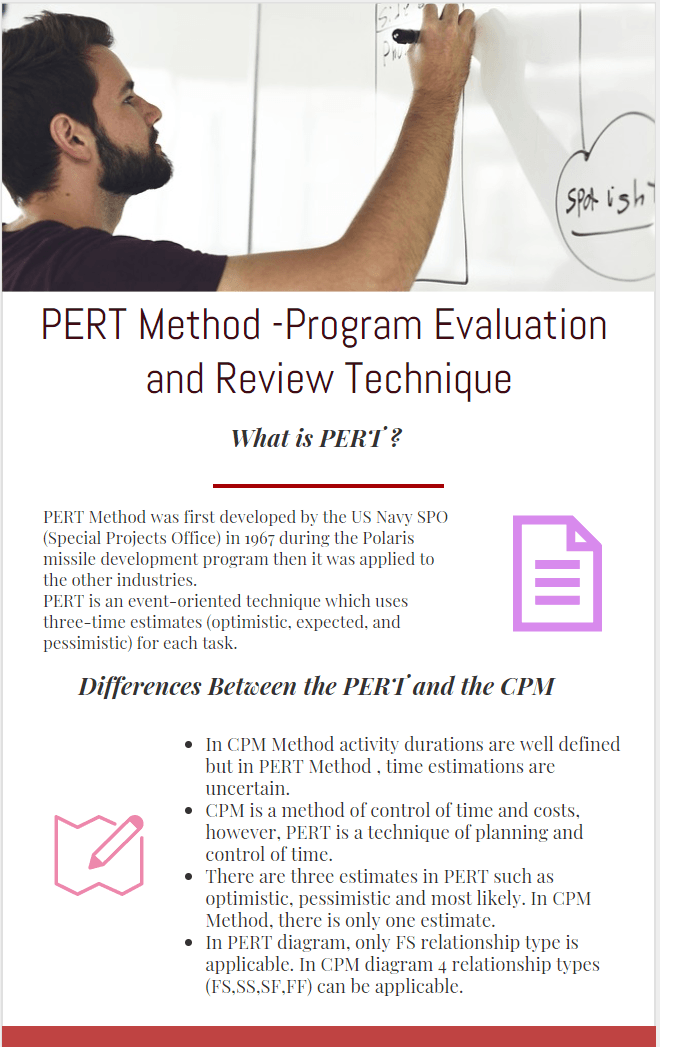Schedule Compression – Fast Tracking vs Crashing – projectcubicle
Schedule Compression Techniques – Fast Tracking vs Crashing Fast Tracking and Crashing are schedule compression techniques which are applied during develop schedule process to shorten an already developed schedule. The purpose of using schedule compression techniques is to try to compress the schedule (shorten the project duration) without changing the original project scope . If … Read more











